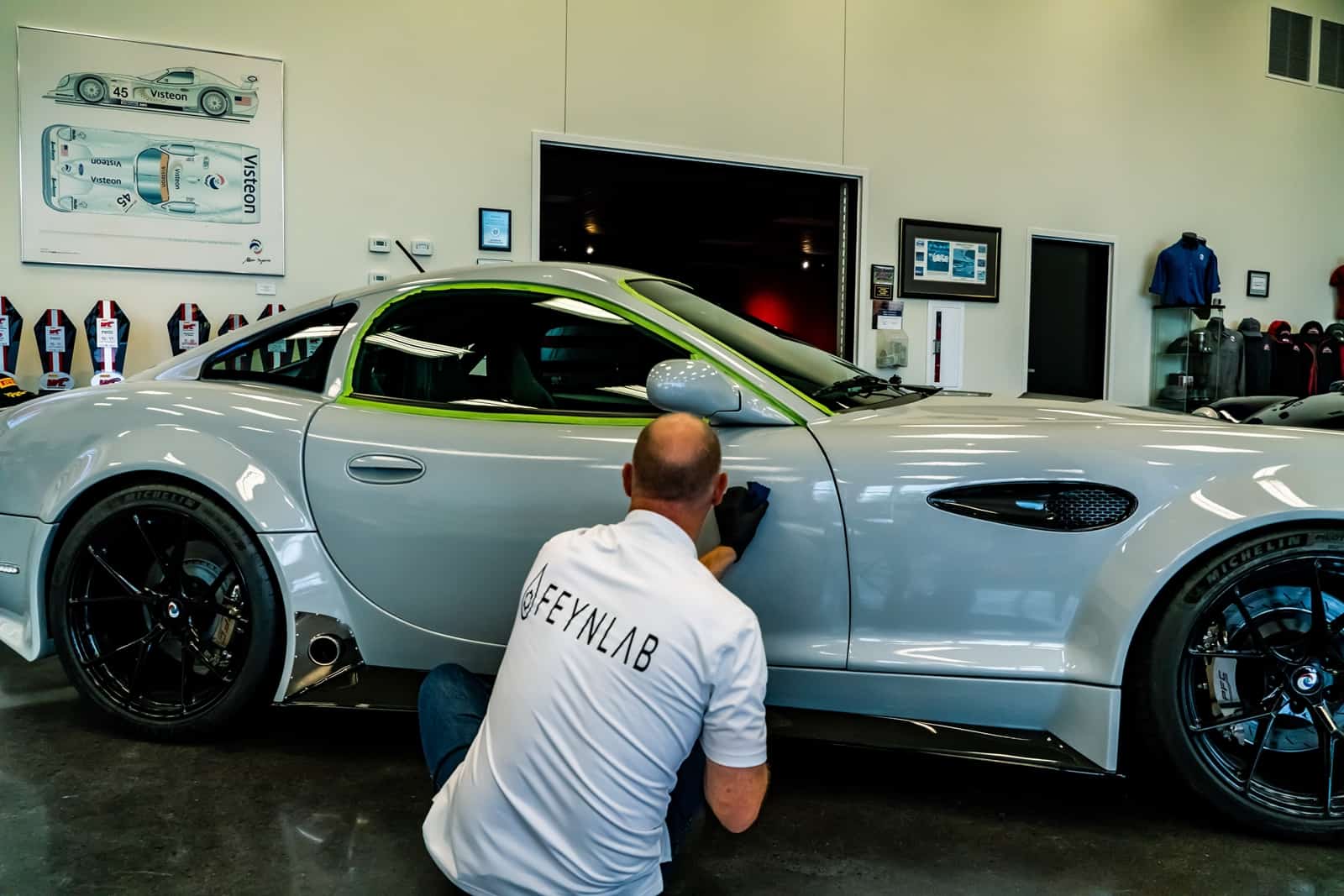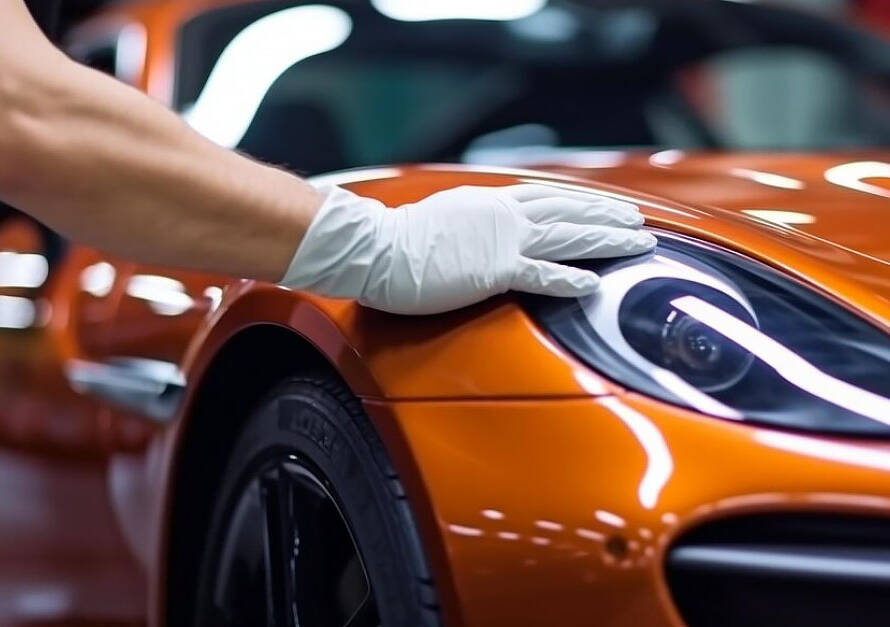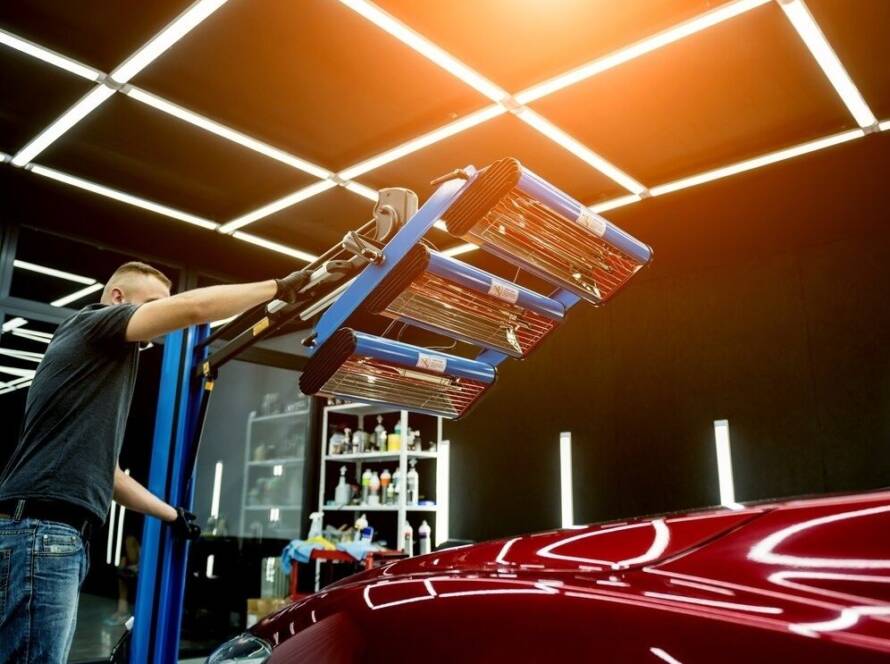So you’ve just invested in a hydrophobic ceramic coating for your car. It’s like giving your ride a shield against the elements. But here’s the thing: even these kinds of protection need a little TLC to keep their powers in shape. That’s exactly what we’re diving into today – making your ceramic coating last longer than you ever thought possible.
Let’s start with the basics. A hydrophobic ceramic coating is a liquid polymer that, when applied to your car’s exterior, creates a protective layer that repels water and contaminants. It’s like your car is wearing an invisibility cloak against dirt and grime! These coatings can last anywhere from 2 to 5 years, but with the right care, you can stretch that lifespan even further.
Understanding the Magic of Hydrophobic Ceramic Coatings
Before we jump into the intricacies of maintenance, it’s crucial to understand what we’re working with. Ceramic coatings work by forming a chemical bond with your car’s paint, creating a layer that’s much harder than traditional wax or sealants. This superpower comes from silicon dioxide (SiO2), which gives the coating its incredible durability and hydrophobic properties.
There are different types of ceramic coatings out there, ranging from consumer-grade products you can apply yourself to professional-grade coatings that require expert application. Whichever type you’ve chosen, the principles of care remain largely the same.
Factors That Can Make or Break Your Coating’s Lifespan
Now, let’s talk about the villains here – the factors that can chip away at your coating’s effectiveness. First up, we’ve got environmental factors. UV rays are like kryptonite to your coating, slowly breaking down its structure over time. Then there’s pollution, acid rain, and bird droppings.
Your driving habits play a role too. Frequent long trips on highways littered with bugs and debris can take a toll. And let’s not forget about how often (or how rarely) you wash your car. Too much washing with harsh chemicals? – that’s bad news. Not washing enough? Also bad news. It’s all about finding that perfect spot in between.
The Art of Proper Washing: Your First Line of Defense
Here’s where the rubber meets the road – or in this case, where the microfiber meets the paint. Proper washing is your first and most important line of defense in preserving your ceramic coating. Let’s break it down:
- The Two-Bucket Method: This isn’t just car washing; it’s an art form. One bucket for your soapy water, then another to rinse your wash mitt. This prevents you from rubbing dirt particles back onto your car’s surface.
- Choose Your Weapons Wisely: Opt for a pH-neutral car shampoo specifically designed for ceramic coatings. Your regular dish soap won’t cut it here – it’s too harsh and can strip away the coating’s properties.
- Microfiber Everything: From your wash mitt to your drying towels, microfiber is your best friend. It’s gentle on the coating and super effective at picking up dirt and moisture.
- Say No to Automatic Car Washes: Spinning brushes can act like sandpaper to your ceramic coating. Hand washing is the preferable way to go.
Decontamination: Getting Down and Dirty (to Stay Clean)
Even with regular washing, your car will eventually pick up contaminants that stick to the surface. This is where decontamination comes in. Think of it as a deep cleanse for your car’s skin.
Chemical decontamination involves using products like a deep clean car shampoo as iron & tar removers. These break down stubborn contaminants that have bonded to the surface. Follow this up with physical decontamination using a clay bar or clay mitt. This process might seem intimidating, but it’s crucial for maintaining the smooth, glossy surface that makes your car look like it just rolled off the showroom floor.
Now you might ask – “How often should you decontaminate?” For most drivers, 2-3 times a year should do the trick. But if you live in an area with high pollution or frequently park under trees, you might need to do it more often.
Shielding Against the Sun’s Wrath
Remember how we said UV rays are like kryptonite to your coating? Well, here’s how to fight back:
- Garage Storage: If possible, park your car in a garage or covered area. It’s like sunscreen for your vehicle.
- Car Covers: When garage parking isn’t an option, a good quality car cover can provide that much-needed protection.
- UV-Resistant Top Coats: Some manufacturers offer UV-resistant top coats that can be applied over your ceramic coating for an extra layer of protection.
Keeping That Water Beading Action Strong
One of the coolest things about ceramic coatings is watching water bead up and roll off your car. It’s not just for show – it’s a sign that your coating is doing its job. But over time, you might notice the beading effect becoming less pronounced. You should not panic when you see one as this is very normal and can be easily addressed.
Ceramic coating boosters are your secret weapon here. These products help to restore and enhance the hydrophobic properties of your coating. Apply them every few months, or whenever you notice the water beading starting to slack off.
Rookie Mistakes to Avoid
Even with the best intentions, it’s easy to make mistakes that can shorten your coating’s lifespan. Here are some big no-nos:
- Using harsh chemicals or acidic cleaners: These can break down the coating faster than you can say “hydrophobic.”
- Neglecting regular maintenance: Your coating is tough, but it’s not invincible. Regular care is key.
- Over-washing or under-washing: Find that balance. Typically, washing every 1-2 weeks is a good rule of thumb.

When to Call in the Pros
While most maintenance can be done at home, there are times when it’s best to seek professional help. If you notice any of the following, it might be time for a pro:
- Significant reduction in hydrophobic properties, even after using boosters.
- Visible scratches or swirl marks that don’t disappear after washing
- Areas where the coating seems to have worn off completely
Troubleshooting Common Issues
Even with the best care, you might encounter some issues. Here’s how to handle them:
- Water Spots: These can etch into the coating if left too long. Remove them quickly with a dedicated water spot remover.
- Light Scratches: Many ceramic coatings have self-healing properties for very light scratches. Try parking the car in the sun or using a heat gun (carefully!) to activate this feature.
- Tree Sap and Other Elements: Remove these as soon as you see one! If left too long, they can cause etching. Use a quick detailer spray and a microfiber cloth to remove them gently.
Key Takeaways
Maintaining a ceramic coating might seem like a lot of work but it’s worth your time and effort. With proper care, your coating can keep your car looking showroom-fresh for years to come. Remember, consistency is key. Establish a regular maintenance routine, and your car will thank you for its stunning appearance.
Let’s recap the key points:
- Understand your ceramic coating and what affects its lifespan
- Wash properly and regularly using the right products
- Decontaminate periodically to keep the surface smooth
- Protect against UV damage whenever possible
- Avoid common mistakes that can damage the coating
- Seek professional help when needed
- Address issues promptly to prevent long-term damage
By following these tips and tricks, you’re not just maintaining a coating – you’re preserving your car’s beauty and value. So go forth, armed with this knowledge, and enjoy that head-turning shine for years to come!
Remember, every time you see water beading beautifully on your car’s surface, your ceramic coating is magnificently doing its job. With a little love and care, it’ll keep doing that job for a long, long time. Happy driving, and may your car always look as good as the day you coated it!


